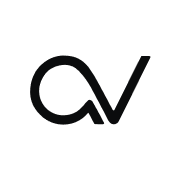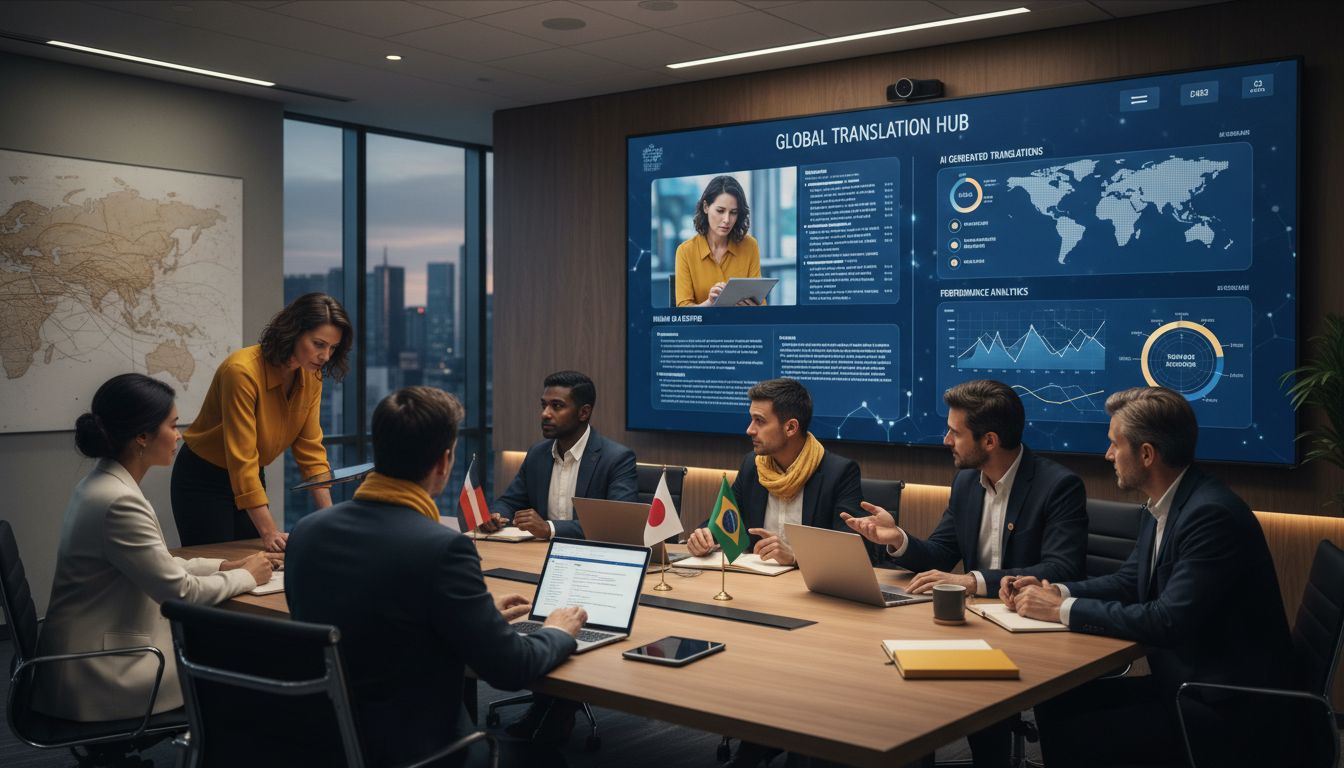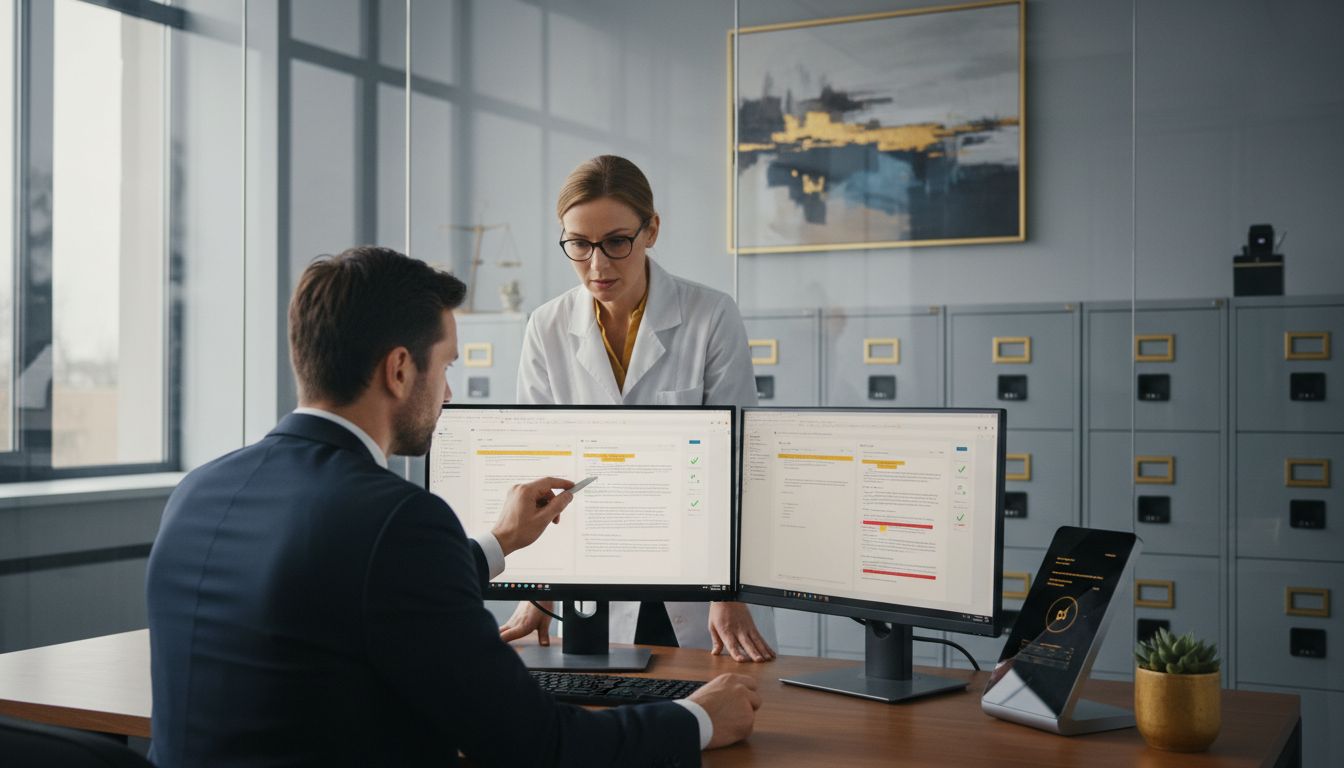Why AI+Human Translation: Complete Industry Guide
- AD VERBUM

- Nov 21
- 8 min read
Updated: Nov 24

Translation is changing faster than ever, with over 60 percent of american companies now exploring AI and human collaboration to meet global language demands. As businesses strive to communicate accurately across borders, the stakes have never been higher. This article unpacks the core principles of AI plus human translation, revealing how this approach enhances speed, accuracy, and security where it matters most.
Table of Contents
Key Takeaways
Point | Details |
AI+Human Translation Enhances Efficiency | This collaborative approach combines AI’s speed with human expertise to improve translation accuracy and turnaround times. |
Technological Evolution in Translation | The shift from traditional machine translation to advanced neural and large language models significantly improves contextual understanding and fluency. |
Critical for Regulated Industries | AI+Human Translation ensures compliance and precision in sectors like healthcare and legal services, where errors can have serious consequences. |
Robust Data Security Mechanisms | The approach integrates strong data protection protocols, ensuring confidentiality and regulatory compliance throughout the translation process. |
AI+Human Translation: Core Principles Explained
The world of translation is undergoing a profound transformation through AI+Human Translation - a collaborative approach that combines technological efficiency with human linguistic expertise. According to research from sciencepg, this methodology enhances both translation speed and accuracy by leveraging the strengths of artificial intelligence and human insight.
At its core, AI+Human Translation operates on a fundamental principle: technology handles repetitive and scalable tasks, while human experts manage nuanced, context-sensitive translation challenges. As highlighted by the Interpretive Theory of Translation, successful translation goes beyond literal word-for-word conversion. It requires deep comprehension of meaning, cultural context, and subtle linguistic variations that only trained human professionals can reliably interpret.
The workflow typically follows a strategic sequence:
AI generates initial translation draft
Human linguists review and refine content
Subject matter experts validate technical accuracy
Final quality assurance checks ensure compliance and precision
This method provides several critical advantages for organizations operating in complex, regulated industries:
Faster turnaround times compared to traditional translation
Significantly reduced translation costs
Maintained high-quality linguistic and contextual accuracy
Consistent terminology and brand voice preservation
Scalability across multiple languages and document types
By integrating advanced AI capabilities with human linguistic expertise, AI+Human Translation represents a powerful solution for global communication challenges. The approach does not replace human translators but empowers them with sophisticated technological tools to deliver more efficient and precise translations.
Machine, Neural, and LLM Translation Distinctions
The landscape of translation technology has dramatically evolved, moving from traditional machine translation to sophisticated neural and large language model (LLM) approaches. According to research from ArXiv, these technological advances have significantly improved translation quality and efficiency, presenting a complex ecosystem of translation methodologies.
Machine Translation (MT) represents the earliest form of automated translation, characterized by rule-based and statistical approaches that often produced literal, mechanical translations. In contrast, Neural Machine Translation (NMT) emerged as a more advanced technique, utilizing deep learning algorithms to create contextually aware translations. As detailed by Wikipedia’s Neural Machine Translation overview, NMT fundamentally transformed translation by introducing neural network architectures that can understand linguistic nuances more comprehensively.
Key distinctions between these translation technologies include:
Machine Translation: Rigid, rule-based, low contextual understanding
Neural Machine Translation: Context-aware, statistical learning, improved fluency
Large Language Models (LLM): Advanced context comprehension, generative capabilities, nuanced interpretation
The progression from traditional machine translation to LLMs represents a quantum leap in translation technology. While early machine translation systems relied on direct word-for-word substitution, modern LLMs can understand complex linguistic contexts, cultural nuances, and even idiomatic expressions. This evolution means translations are no longer just mechanically converted text but intelligently adapted communication artifacts.
Modern translation technologies now prioritize not just literal accuracy but contextual relevance. LLMs represent the cutting edge of this transformation, capable of generating translations that capture subtle semantic meanings, tone, and cultural implications. The research from ArXiv highlights that while these technologies offer unprecedented translation capabilities, challenges like domain-specific accuracy and rare word prediction still require ongoing refinement.
Industry Applications in Regulated Sectors
Regulated industries demand unprecedented precision in translation, making AI+Human Translation a critical technological solution. According to research from sciencepg, these complex sectors require a delicate balance between technological efficiency and human expert oversight to ensure absolute accuracy and compliance.
In highly sensitive domains like healthcare, legal services, and pharmaceutical manufacturing, translation errors can lead to catastrophic consequences. The AI+Human Translation workflow addresses these challenges by implementing a multi-layered verification process. Research from ArXiv emphasizes that large language models must be carefully constrained and reviewed to maintain domain-specific terminology and regulatory standards.
Key industry applications include:
Healthcare: Translating clinical trial documents, patient information, medical device instructions
Legal Services: Contract localization, international litigation documentation, regulatory compliance materials
Pharmaceutical Manufacturing: Safety protocols, research documentation, regulatory submission materials
Financial Services: Compliance documents, international banking agreements, risk assessment reports
Medical Device Manufacturing: Technical specifications, user manuals, regulatory approval documentation
The critical advantage of AI+Human Translation in these sectors lies in its ability to combine machine learning’s processing speed with human expertise’s nuanced understanding. Unlike generic translation tools, this approach ensures that:
Technical terminology remains precisely consistent
Cultural and contextual subtleties are accurately preserved
Regulatory compliance is meticulously maintained
Confidentiality and data protection standards are strictly followed
By integrating advanced AI capabilities with subject matter expert review, organizations can transform their global communication strategies.

The AI+Human Translation methodology represents more than a technological solution – it’s a strategic approach to managing complex, high-stakes multilingual communication challenges across the most demanding professional landscapes.
Data Security, Compliance, and Terminology Control
Data security represents the critical foundation of modern translation technologies, particularly in industries where confidential information is paramount. According to research from ArXiv, machine translation systems must navigate complex challenges related to domain-specific terminology and rare word prediction while maintaining absolute data protection standards.
The AI+Human Translation approach addresses these challenges through a multi-layered security framework. Unlike public translation platforms that expose sensitive content to potential data breaches, this methodology ensures complete control over linguistic assets. As highlighted by Wikipedia’s Neural Machine Translation overview, advanced translation architectures can be engineered to provide robust security protocols that protect confidential information throughout the translation process.
Key security and compliance mechanisms include:
Private Cloud Infrastructure: Dedicated, isolated translation environments
End-to-End Encryption: Protecting data during transmission and storage
Strict Access Controls: Granular user permissions and authentication
Comprehensive Audit Trails: Tracking every translation interaction
Regulatory Compliance Mapping: Alignment with GDPR, HIPAA, industry-specific standards
Terminology control represents another critical aspect of secure translation workflows. Organizations can implement sophisticated strategies to maintain linguistic consistency:
Develop comprehensive, industry-specific terminology databases
Create locked glossaries with approved translations
Implement AI constraints that prevent unauthorized term variations
Enable human expert review for complex linguistic scenarios
Continuously update and refine terminology repositories
The intersection of advanced AI capabilities, human expertise, and robust security protocols transforms translation from a potential vulnerability into a strategic organizational asset. By prioritizing data protection, regulatory compliance, and precise linguistic control, AI+Human Translation provides enterprises with a powerful tool for global communication that doesn’t compromise sensitivity or confidentiality.
Risks of MT/NMT and Benefits of Proprietary LLM
Machine Translation (MT) and Neural Machine Translation (NMT) represent early attempts to automate linguistic conversion, but they come with significant inherent risks that can critically compromise translation quality. According to research from ArXiv, these technologies persistently struggle with domain-specific challenges, particularly in handling rare word predictions and maintaining contextual accuracy.
The fundamental limitations of traditional translation technologies become especially pronounced in specialized industries. Wikipedia’s Neural Machine Translation overview highlights that generic translation systems often produce translations that are technically correct but contextually inappropriate or potentially misleading. This risk is exponentially higher in regulated sectors like healthcare, legal services, and technical manufacturing, where precision is not just preferred but mandatory.
Key risks associated with MT and NMT include:
Contextual Misinterpretation: Literal translations that miss nuanced meanings
Terminology Inconsistency: Unpredictable word choices across documents
Data Security Vulnerabilities: Potential exposure of sensitive information
Compliance Violations: Translations that do not meet industry-specific standards
Hallucination Errors: AI-generated content that appears plausible but is factually incorrect
Proprietary Large Language Models (LLMs) offer a transformative alternative by addressing these critical shortcomings:
Implement strict domain-specific training protocols
Enable precise terminology enforcement
Provide granular control over translation outputs
Maintain robust data protection mechanisms
Support continuous learning and refinement
The evolution from traditional MT/NMT to proprietary LLMs represents more than a technological upgrade – it’s a fundamental reimagining of translation as a strategic, secure, and intelligent communication process. By combining advanced machine learning with human expertise, organizations can transform translation from a potential liability into a precise, reliable global communication tool.

Precision and Security Matter: Why Choose AD VERBUM’s AI+HUMAN Translation
The article highlights the critical challenges companies face with traditional Machine Translation and standard Neural Machine Translation in regulated industries. Problems such as context misinterpretation, terminology inconsistency, and severe data security risks make accurate multilingual communication a high-stakes issue. You need a solution that not only accelerates translation but also enforces strict terminology control and guarantees full data sovereignty.
AD VERBUM solves these challenges with its proprietary LLM-based AI combined with 100% human expert oversight in the AI+HUMAN workflow. Our secure private cloud infrastructure protects your sensitive information from data leaks while ensuring that translations maintain industry compliance and linguistic precision. Whether it is complex medical documents, legal contracts, or financial compliance materials, our system guarantees the accuracy and security you cannot compromise.
Experience the safest and most exact solution tailored for your industry demands with AD VERBUM. Learn how our advanced methodology outperforms public alternatives and elevates your multilingual communication by visiting AD VERBUM.

Take control over your translation projects now and ensure zero-error compliance from start to finish. Discover the full capabilities of our AI+HUMAN translation service designed specifically for regulated sectors. Don’t risk costly mistakes with generic tools—choose precision, security, and speed with AD VERBUM today.
Frequently Asked Questions
What is AI+Human Translation?
AI+Human Translation is a collaborative approach that combines artificial intelligence with human linguistic expertise to enhance translation speed and accuracy. It leverages technology for repetitive tasks while relying on human experts for nuanced translation challenges.
How does AI+Human Translation improve translation quality?
AI+Human Translation improves quality by utilizing a strategic workflow where AI generates an initial draft, which is then refined by human linguists and validated by subject matter experts. This multi-layered approach ensures both accuracy and cultural relevance.
What industries benefit most from AI+Human Translation?
Industries such as healthcare, legal services, pharmaceutical manufacturing, financial services, and medical device manufacturing benefit the most from AI+Human Translation due to their need for precision, compliance, and context-sensitive translations.
What are the risks associated with traditional machine translation?
Traditional machine translation (MT) and neural machine translation (NMT) can lead to contextual misinterpretations, inconsistent terminology, data security vulnerabilities, compliance violations, and hallucination errors. These risks highlight the need for the enhanced capabilities of proprietary large language models (LLMs) integrated with human expertise.
Recommended



